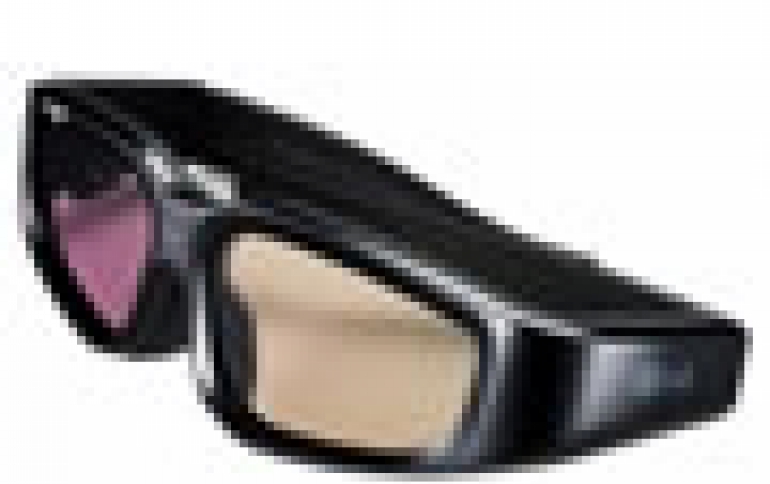
Samsung, LG Battle On 3D Glasses Technologies
Korean heavyweights Samsung and LG compete in the emerging market for 3D-enabled flat-screen televisions and come up with different approaches related to their 3D offerings and the glasses they are offering with their TVs.
Specifically, Samsung is promoting "active" glasses, which work by quickly blocking each eye in sequence, while LG?s glasses employ "passive" technology, which use overlapping images and polarized lenses to simulate depth in images.
The LCD shutter glasses (active) contain liquid crystal that block or pass light through in synchronization with the images on the computer display, using the concept of alternate-frame sequencing.
Some industry insiders claim that Samsung?s active approach is capable of producing better and more natural 3D images. LG's passive approach also requires a front-projection system to complement the television set.
On the other hand, passive 3D technology has an advantage in price competitiveness as the polarized glasses are significantly cheaper than the active ones.
At the recent "IMID 2010" exhibition in Goyang, Gyeonggi Province, Samsung touted the company?s 3D-capable LCD panels optimized for active glasses. The products displayed by Samsung also boasted a 240 Hz refresh rate that allows for sharper, high-definition (HD)-level pictures on 3D televisions.
LG Display, on the other hand, was exhibiting a variety of screens designed for passive glasses, including 47- and 84-inch screens and a 31-inch active matrix organic light emitting diode (AMOLED) panel.
LG believes that passive technology has a better chance of becoming mainstream in the 3D televisions. The company is expected to commpensate for the gap in picture quality by polishing technologies to reduce flickering in the glasses.
About 70 percent of LG?s 3D televisions will be equipped with passive technology, as the company looks to cut into Samsung?s early lead in the market quickly. American TV maker Vizio will be using LG Display?s passive glasses for its 3D televisions that will be released later this year, according to industry sources.
Samsung seems to have no immediate plans to adopt passive technology for its televisions.
Samsung is also the provider of Sony's 3D active 3D glasses.
The LCD shutter glasses (active) contain liquid crystal that block or pass light through in synchronization with the images on the computer display, using the concept of alternate-frame sequencing.
Some industry insiders claim that Samsung?s active approach is capable of producing better and more natural 3D images. LG's passive approach also requires a front-projection system to complement the television set.
On the other hand, passive 3D technology has an advantage in price competitiveness as the polarized glasses are significantly cheaper than the active ones.
At the recent "IMID 2010" exhibition in Goyang, Gyeonggi Province, Samsung touted the company?s 3D-capable LCD panels optimized for active glasses. The products displayed by Samsung also boasted a 240 Hz refresh rate that allows for sharper, high-definition (HD)-level pictures on 3D televisions.
LG Display, on the other hand, was exhibiting a variety of screens designed for passive glasses, including 47- and 84-inch screens and a 31-inch active matrix organic light emitting diode (AMOLED) panel.
LG believes that passive technology has a better chance of becoming mainstream in the 3D televisions. The company is expected to commpensate for the gap in picture quality by polishing technologies to reduce flickering in the glasses.
About 70 percent of LG?s 3D televisions will be equipped with passive technology, as the company looks to cut into Samsung?s early lead in the market quickly. American TV maker Vizio will be using LG Display?s passive glasses for its 3D televisions that will be released later this year, according to industry sources.
Samsung seems to have no immediate plans to adopt passive technology for its televisions.
Samsung is also the provider of Sony's 3D active 3D glasses.





















